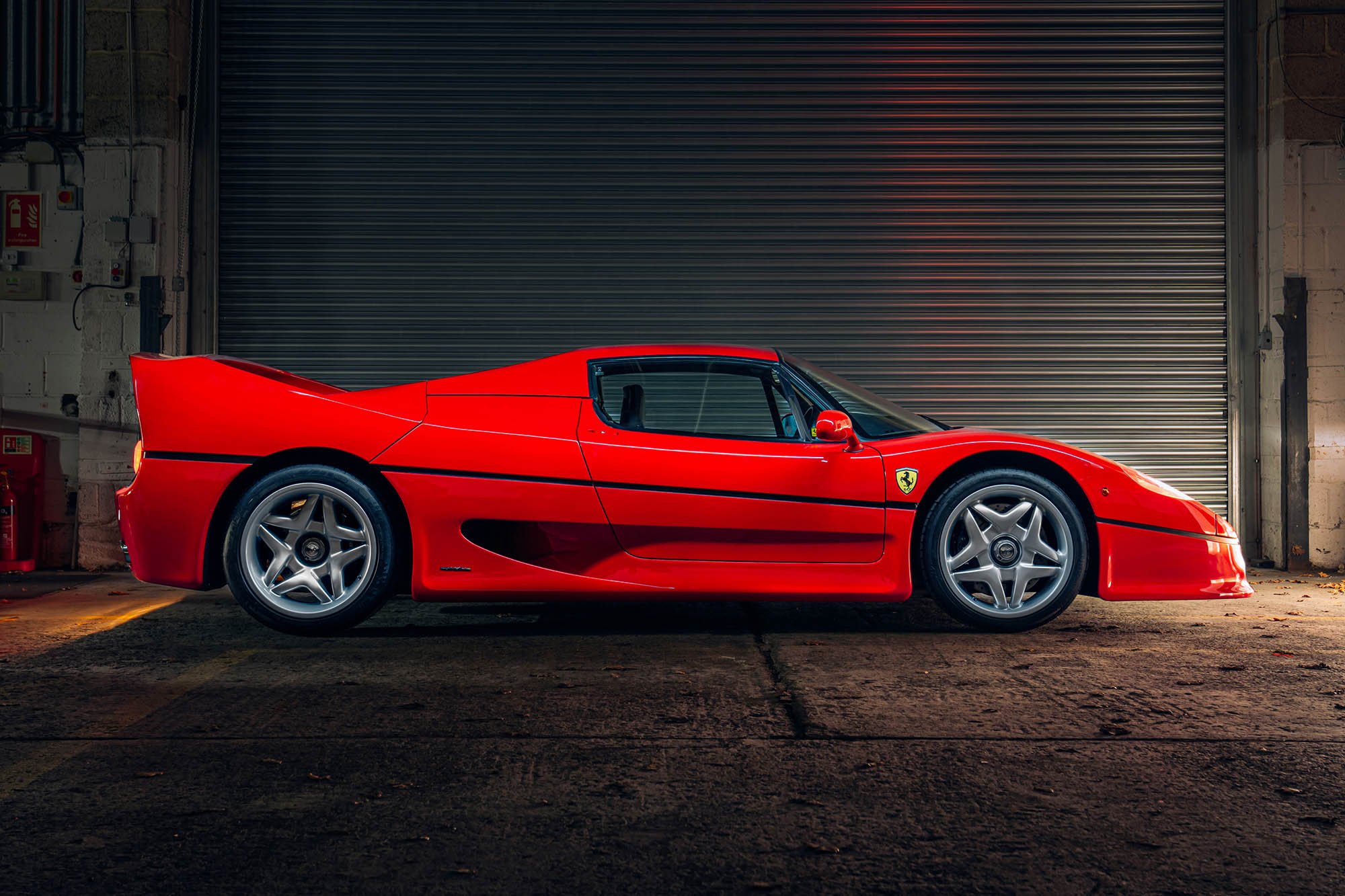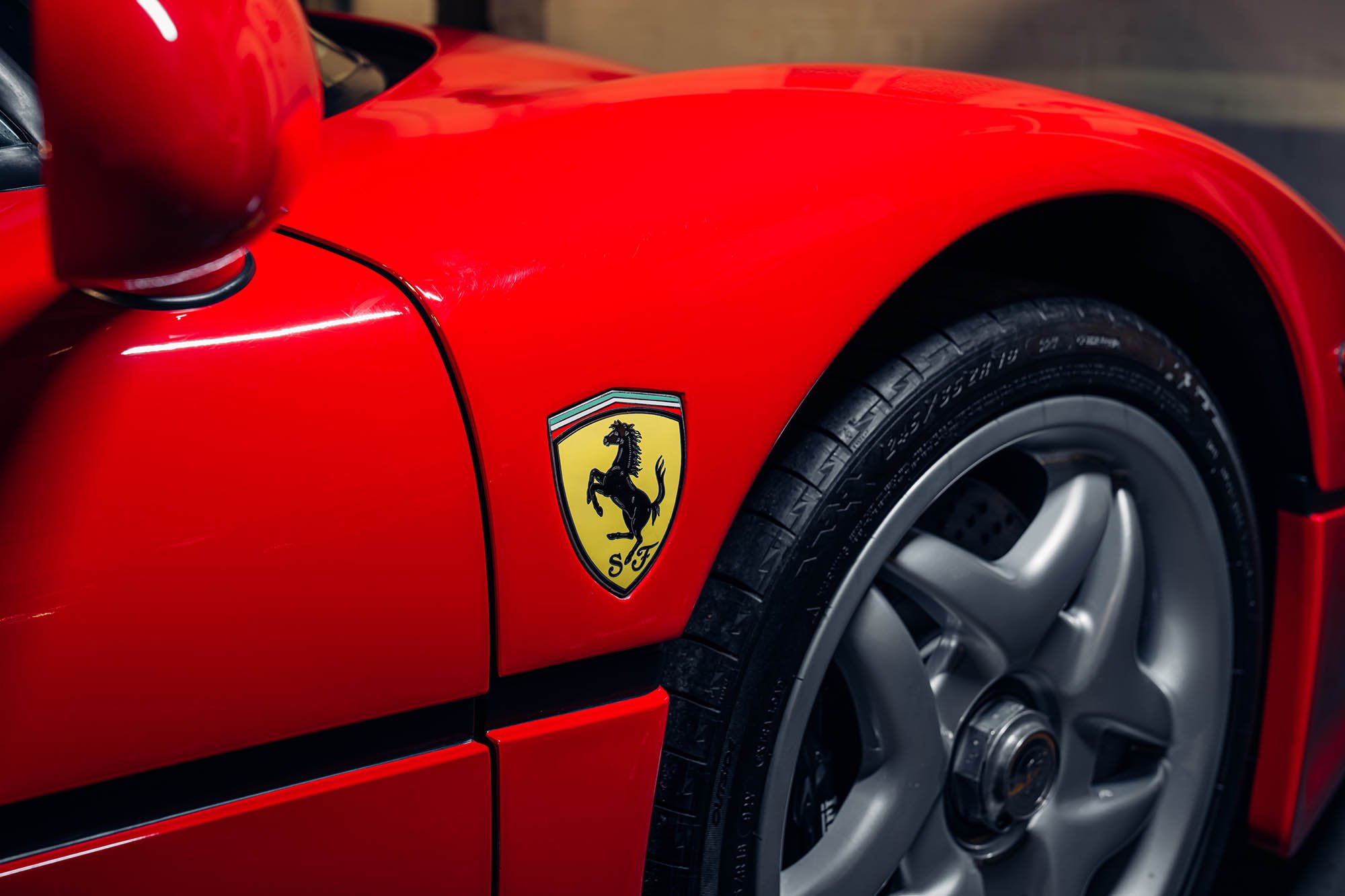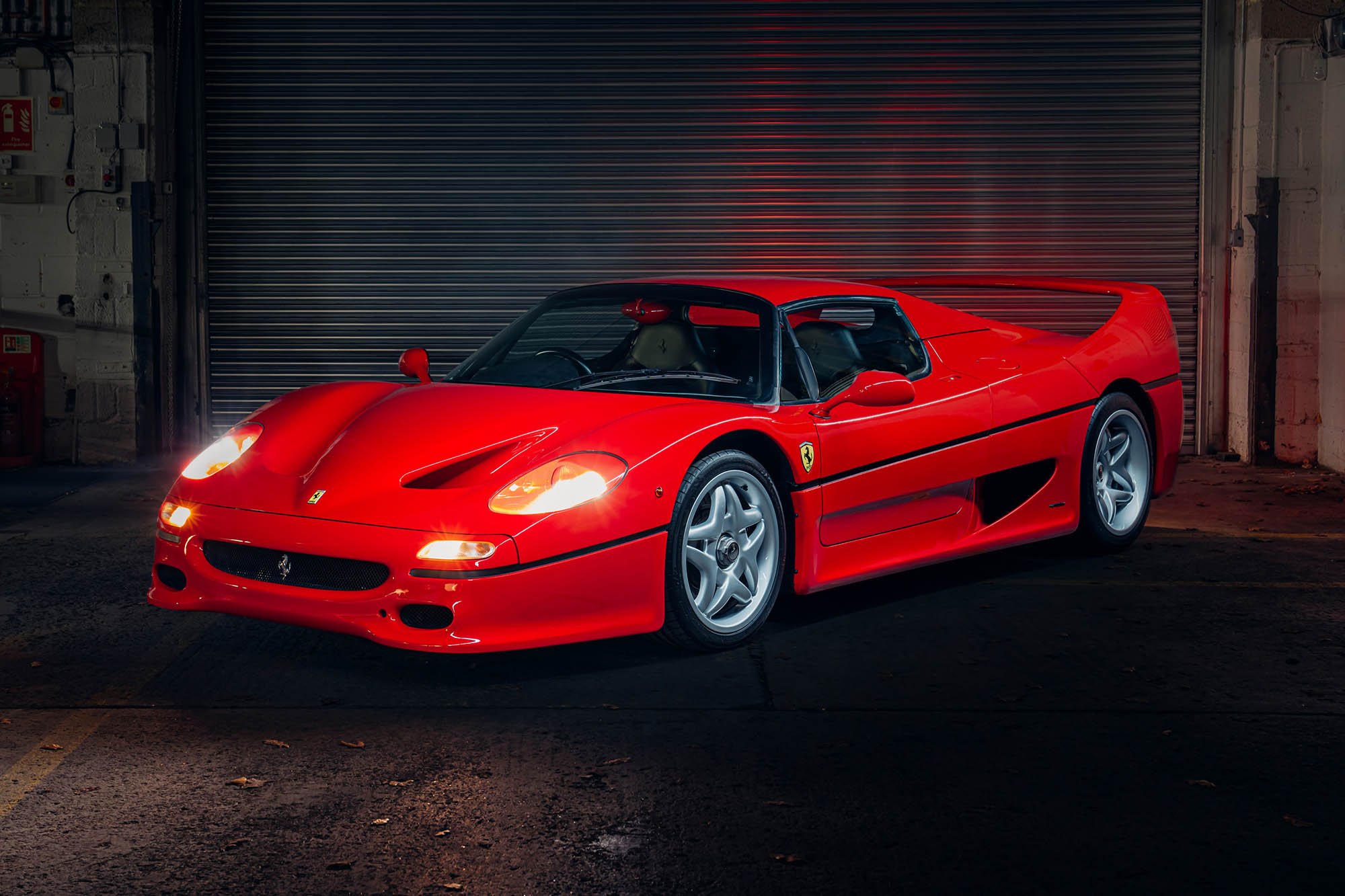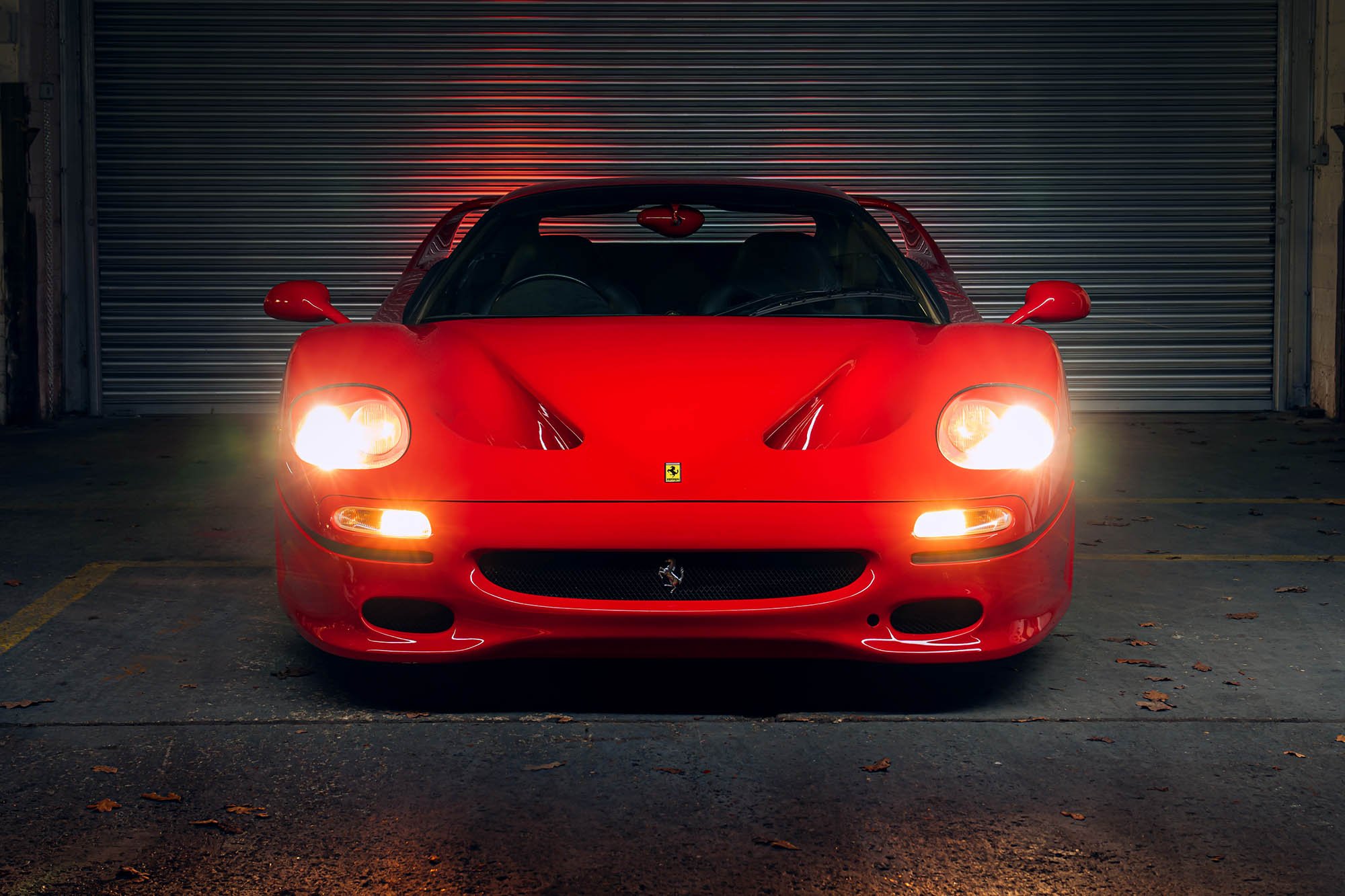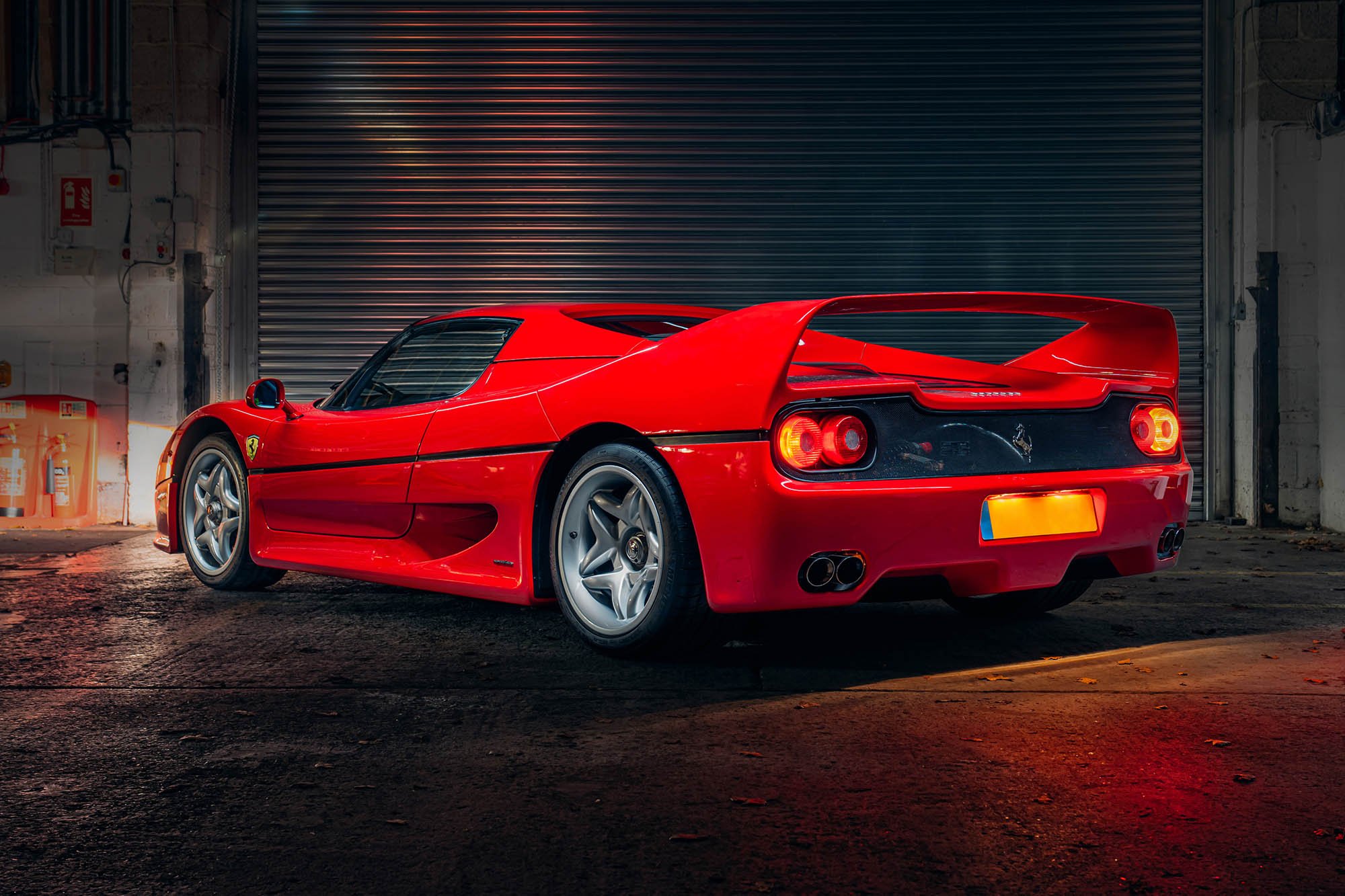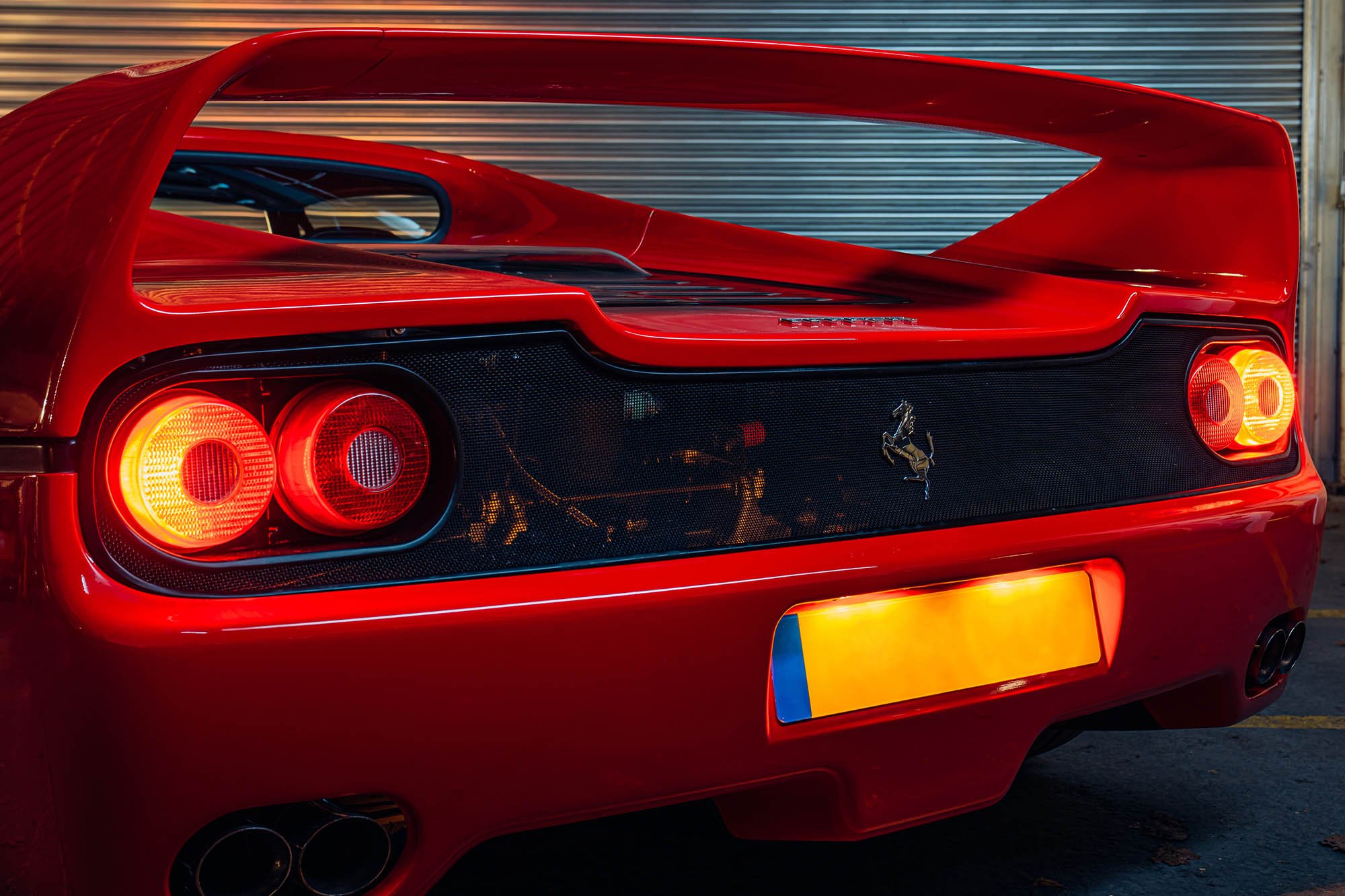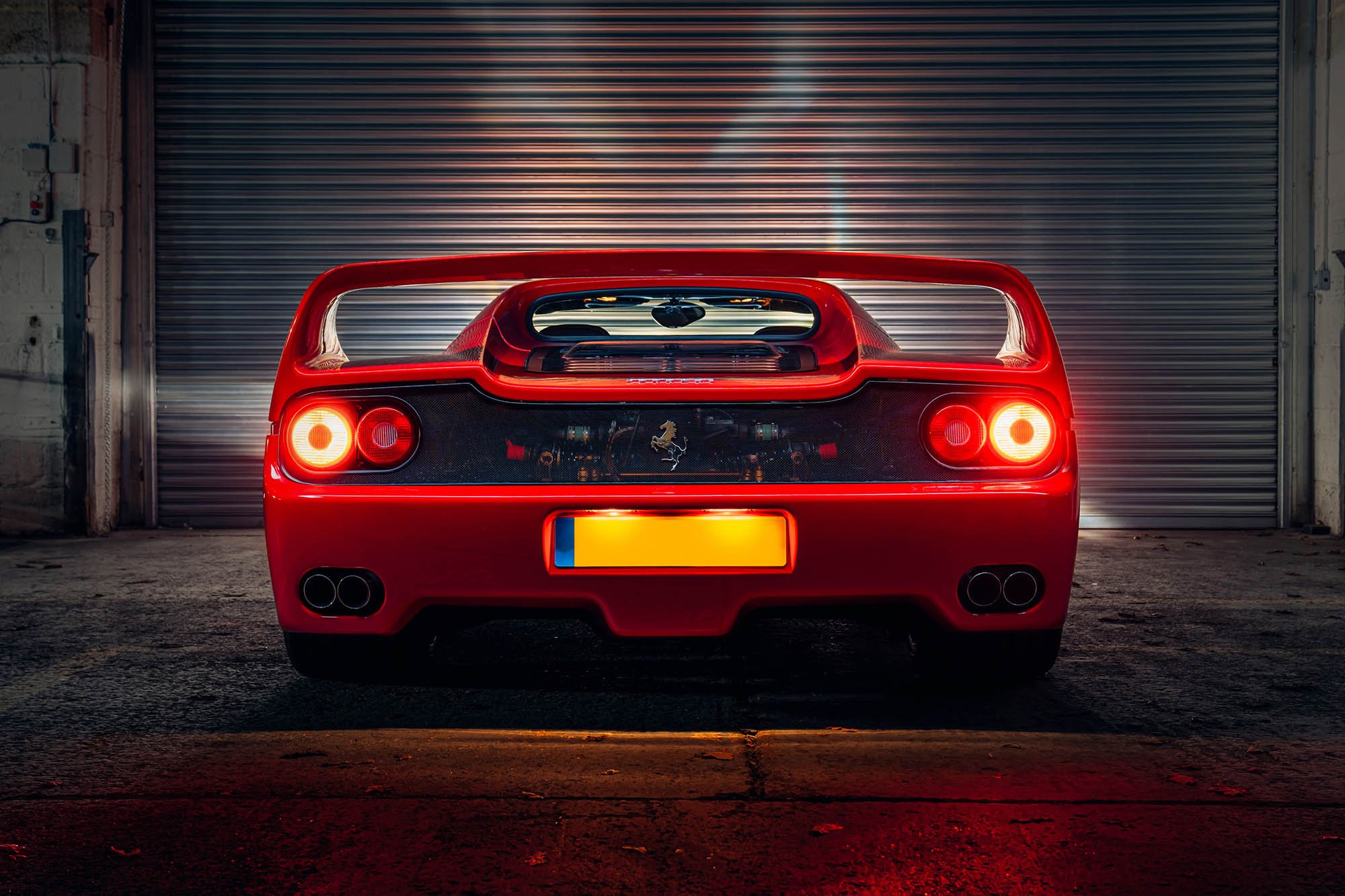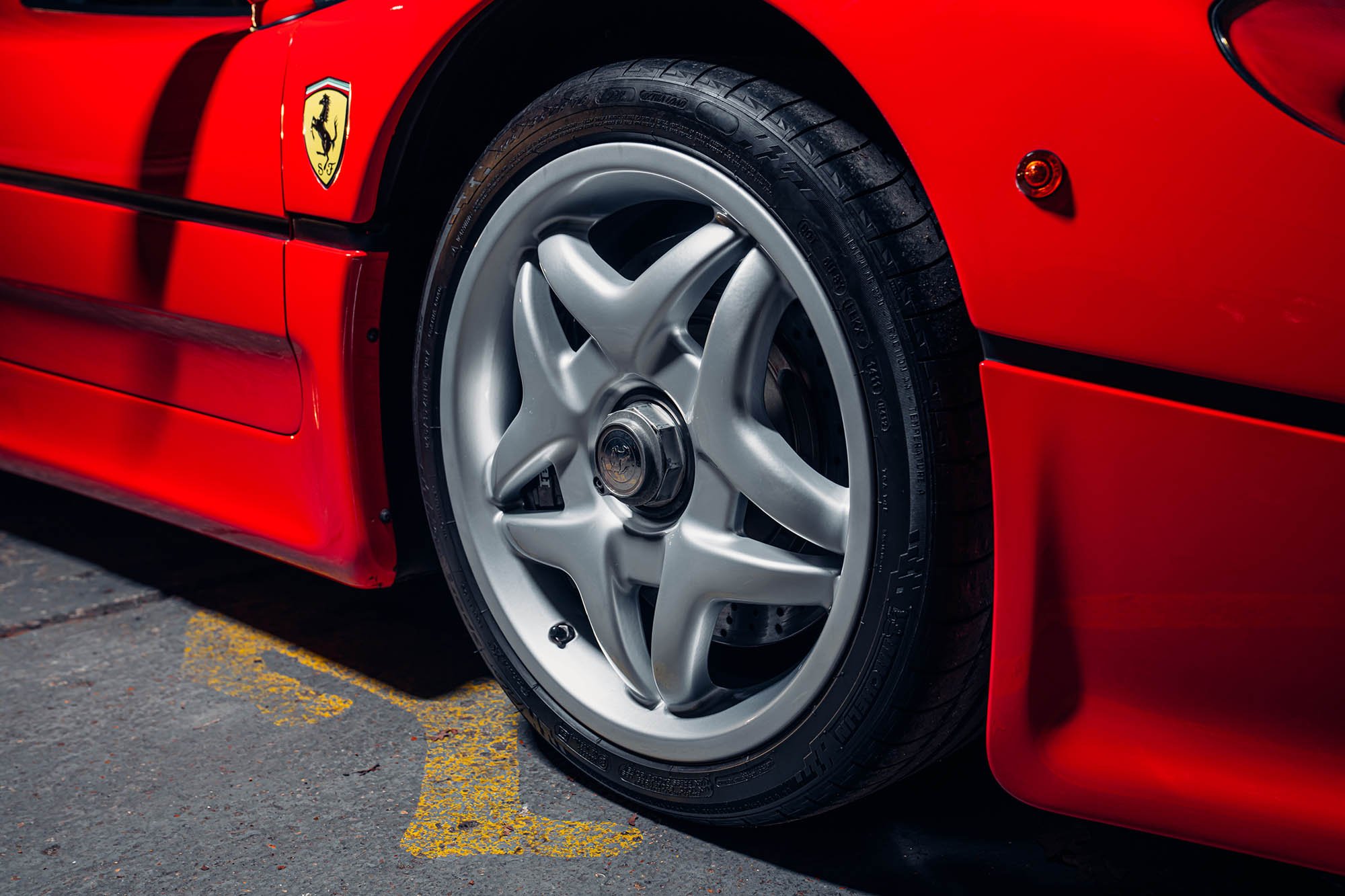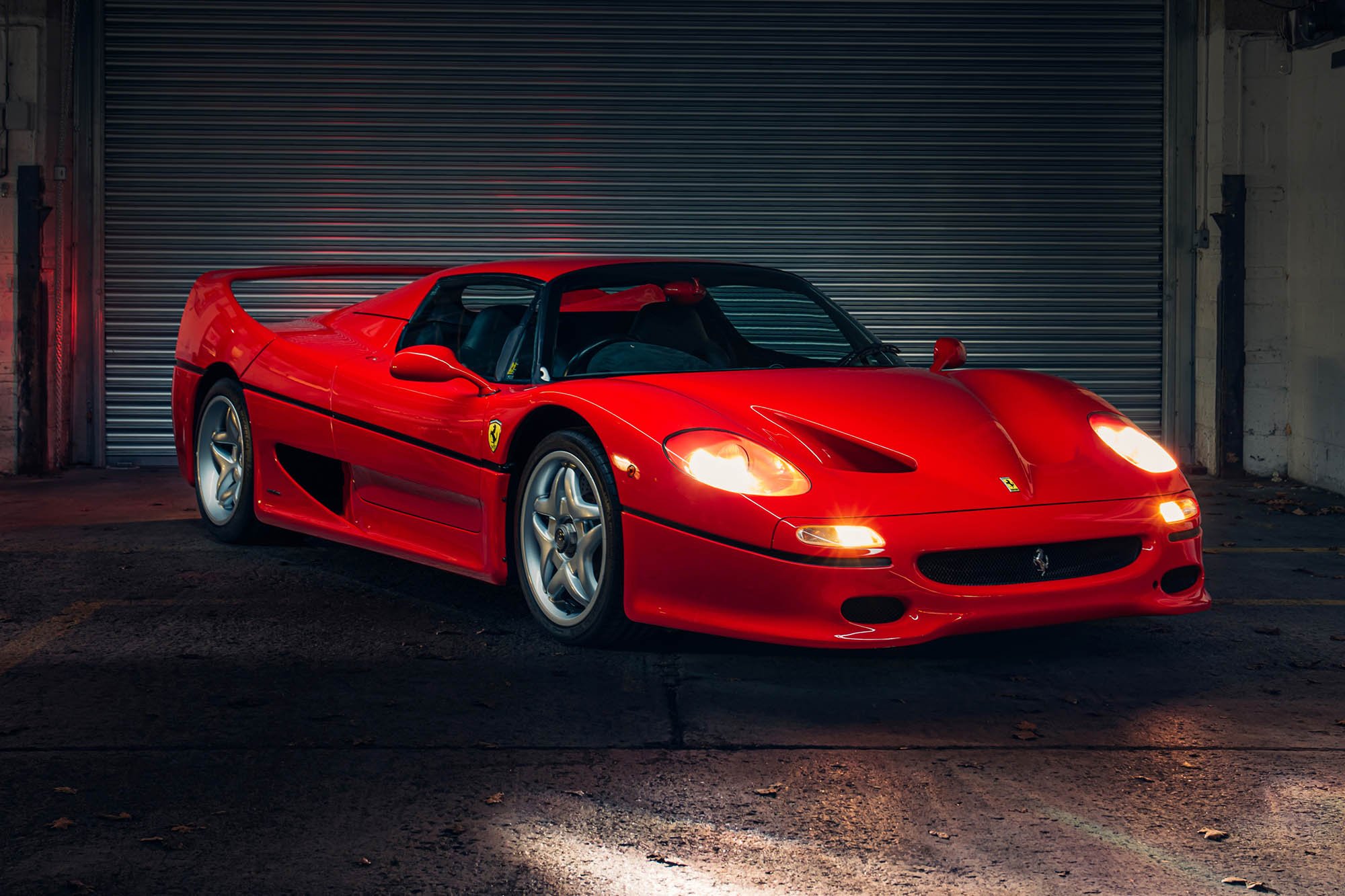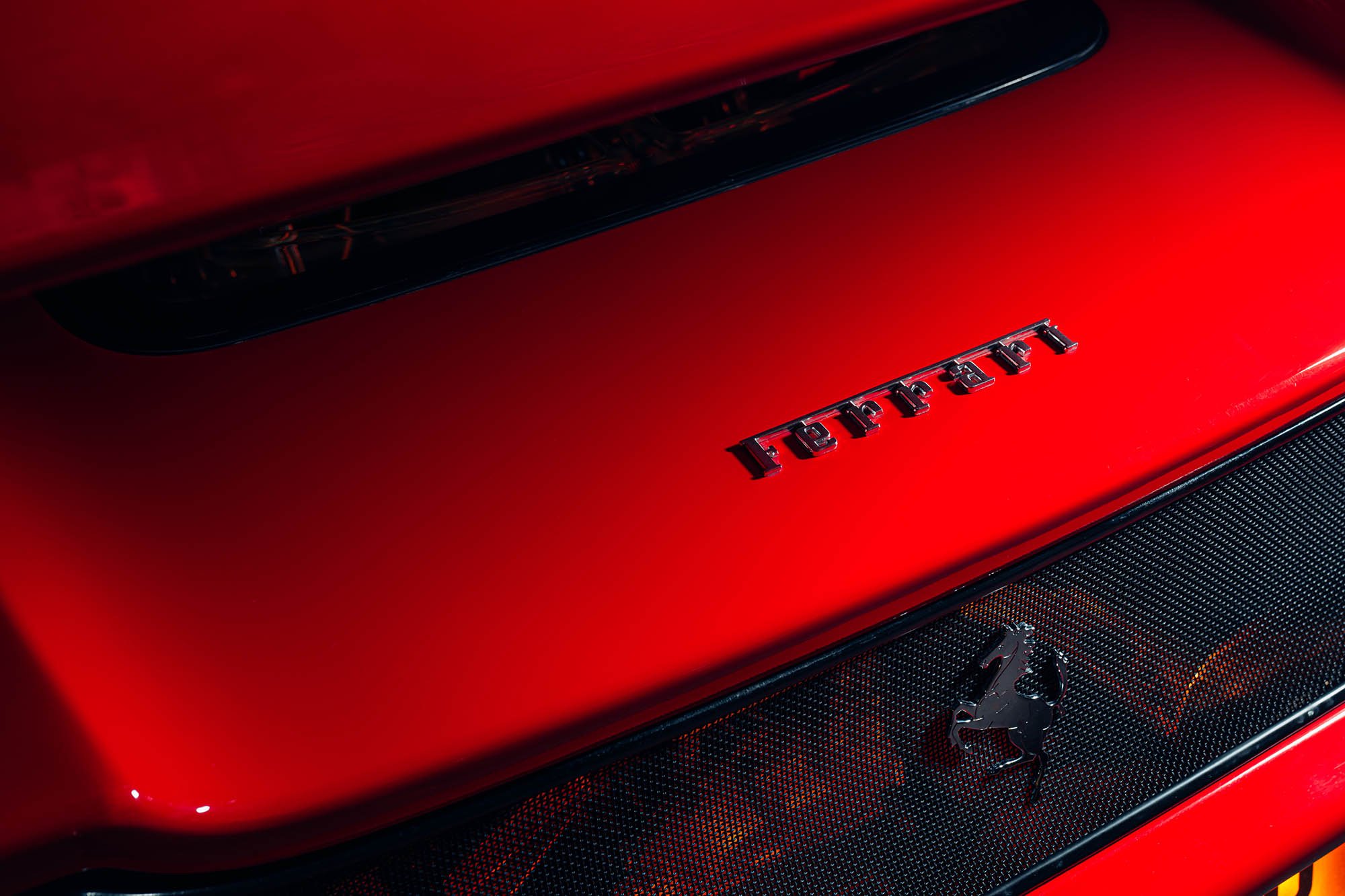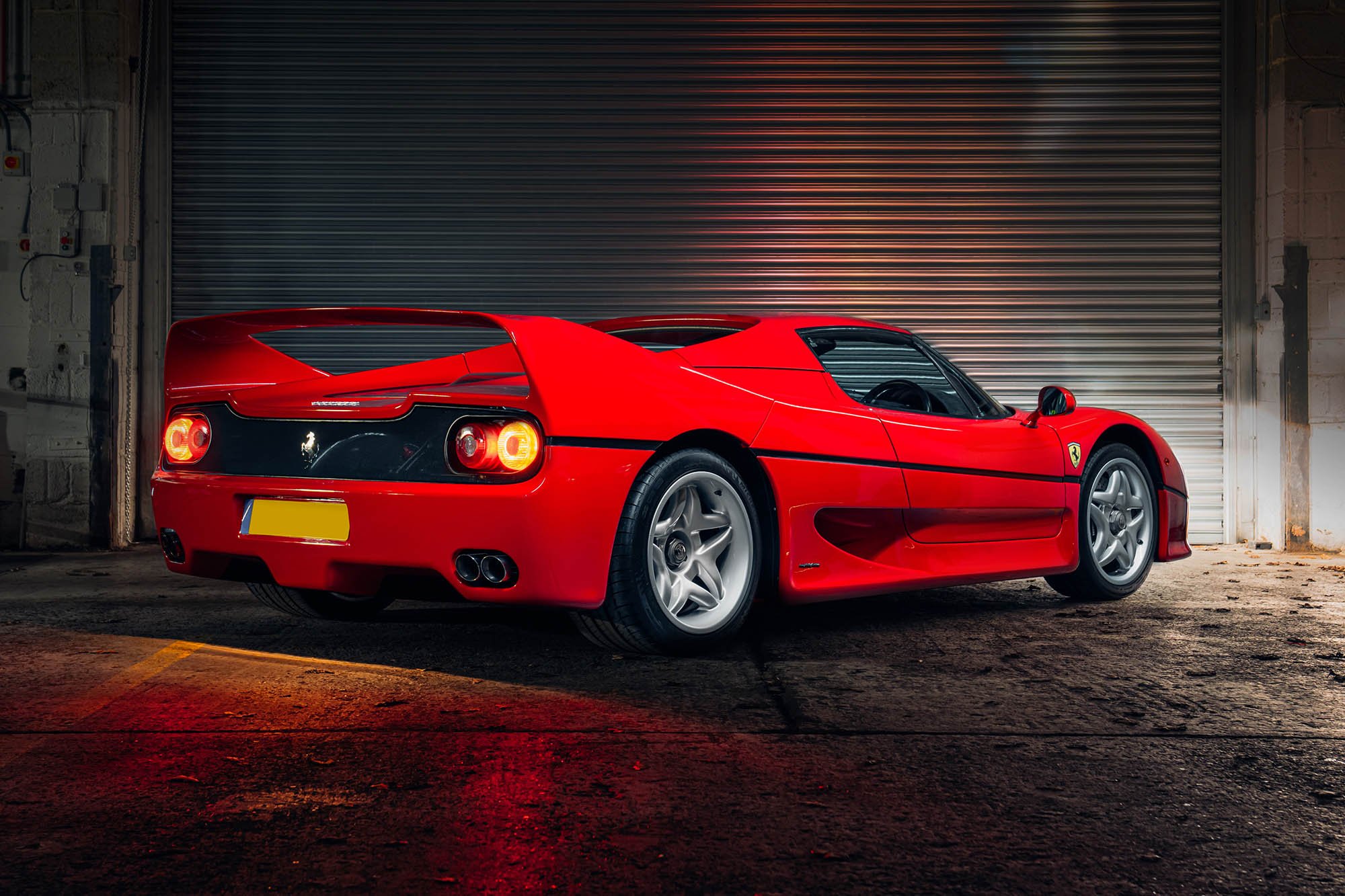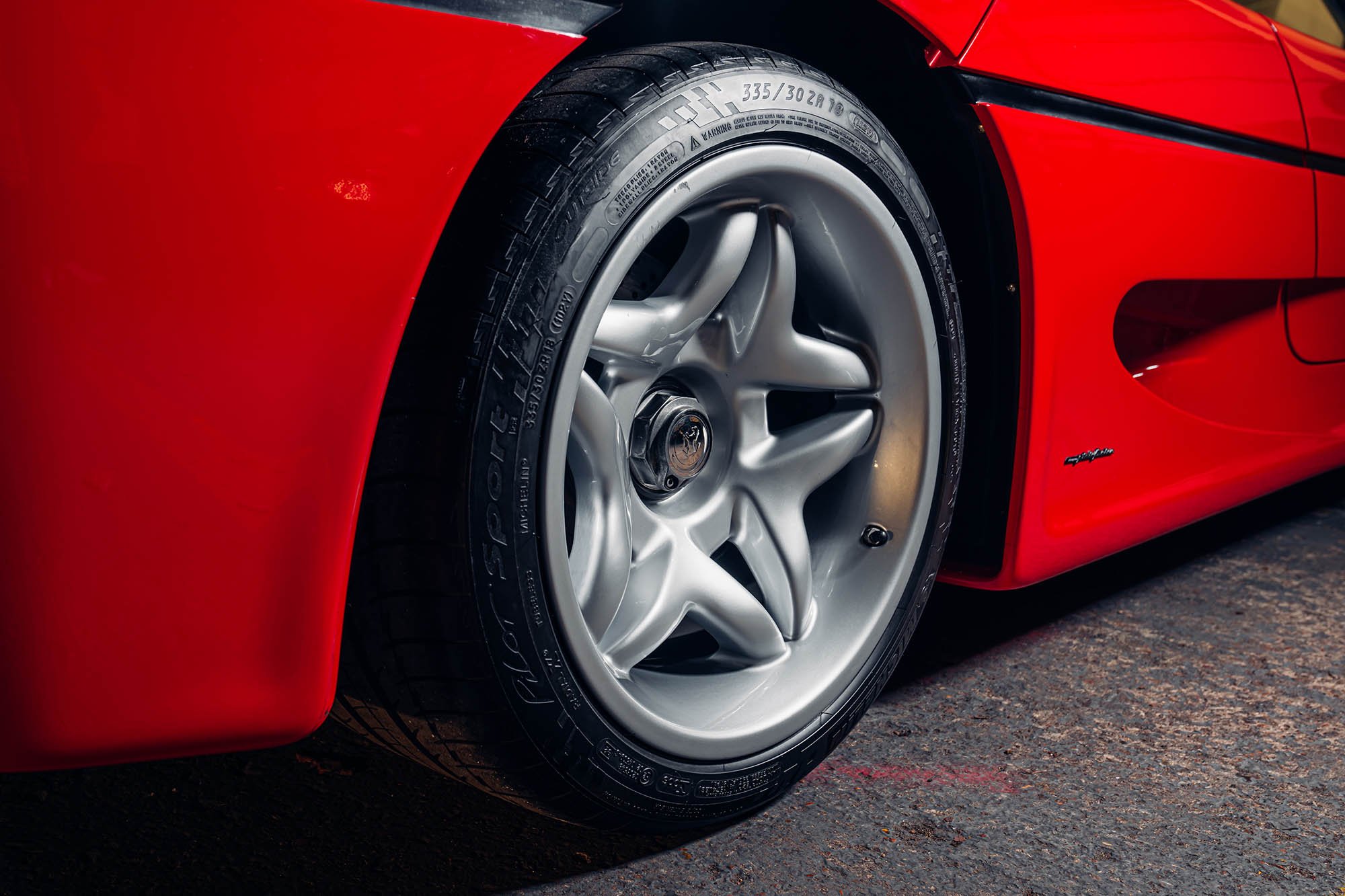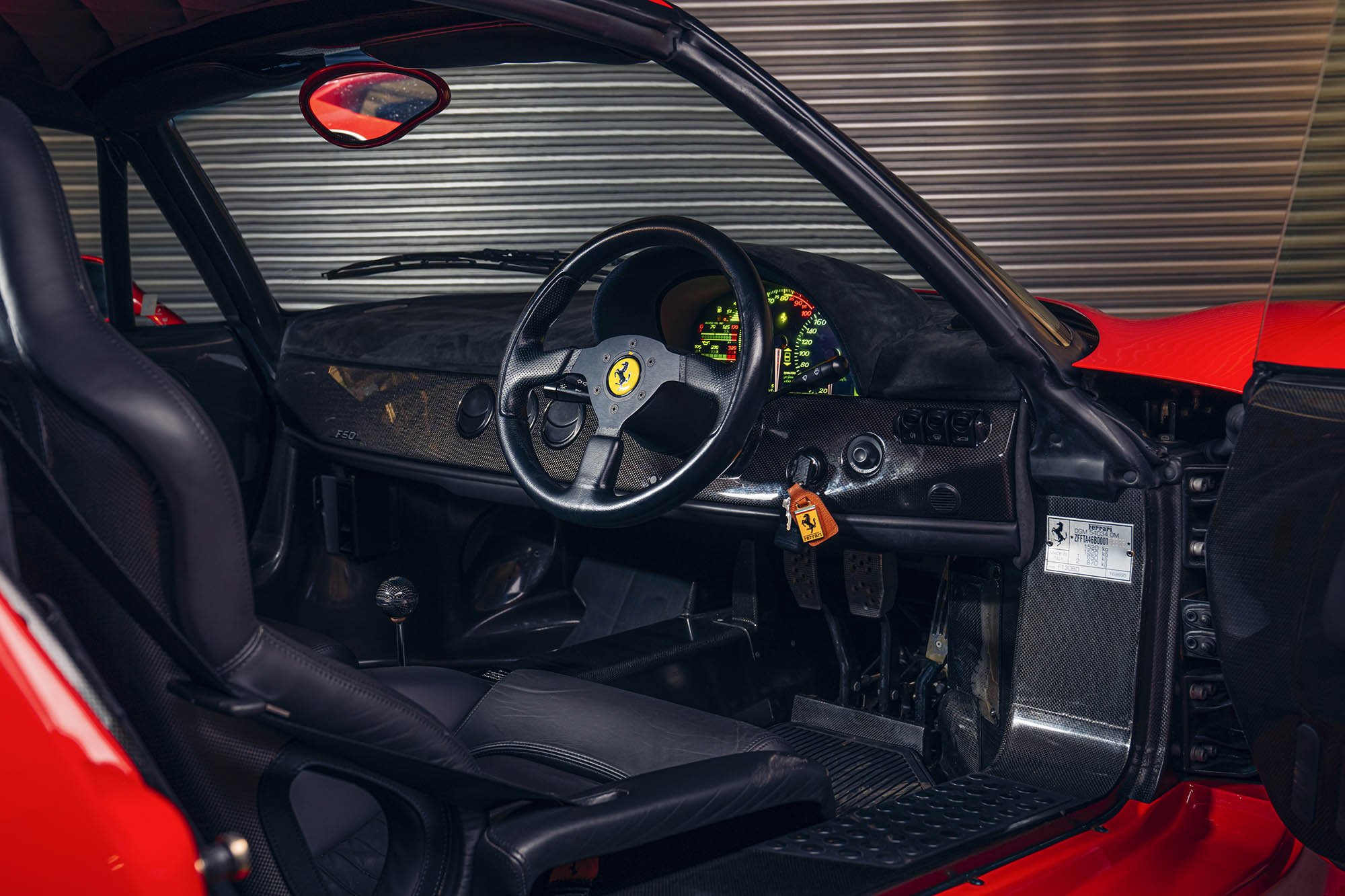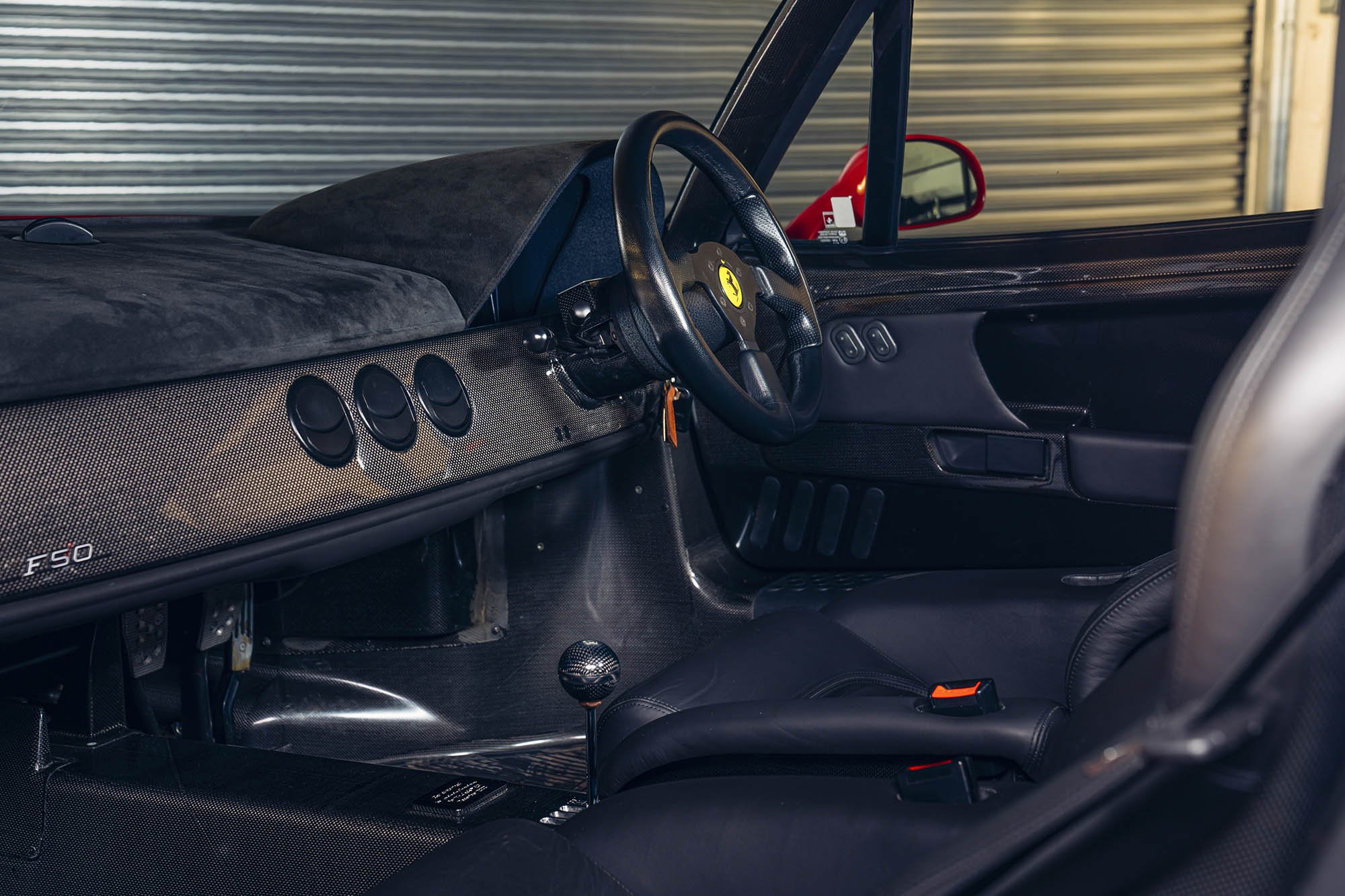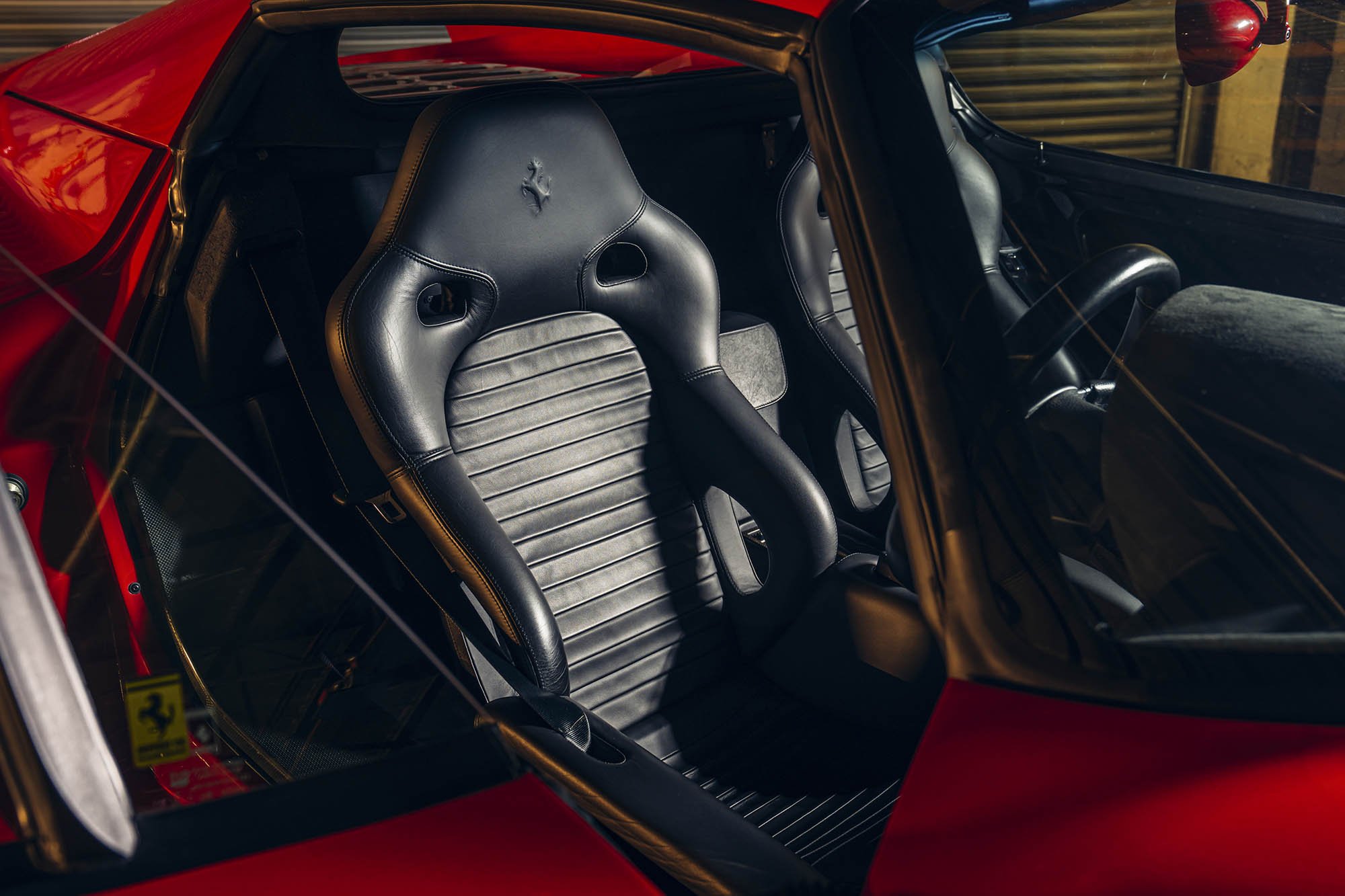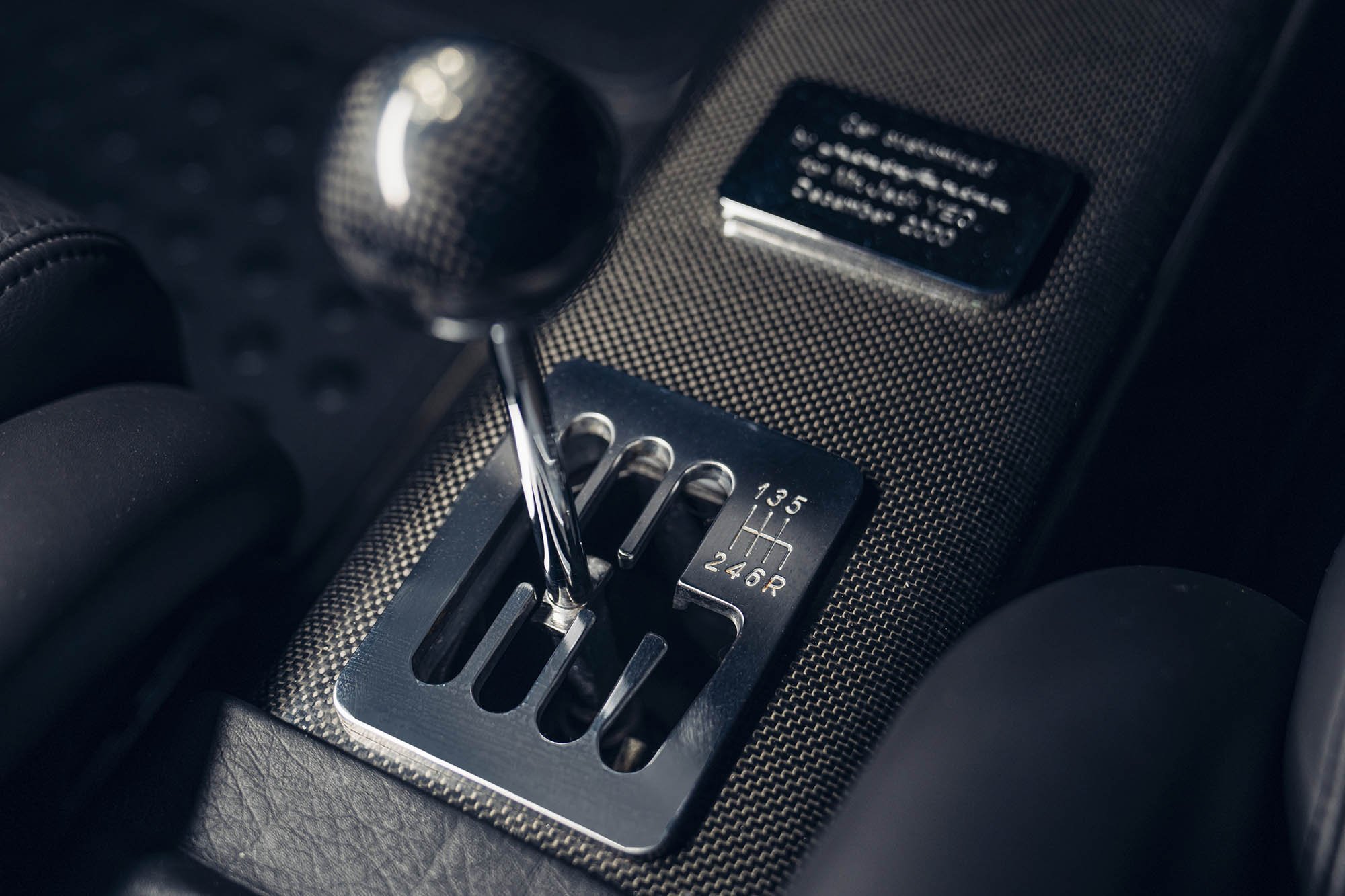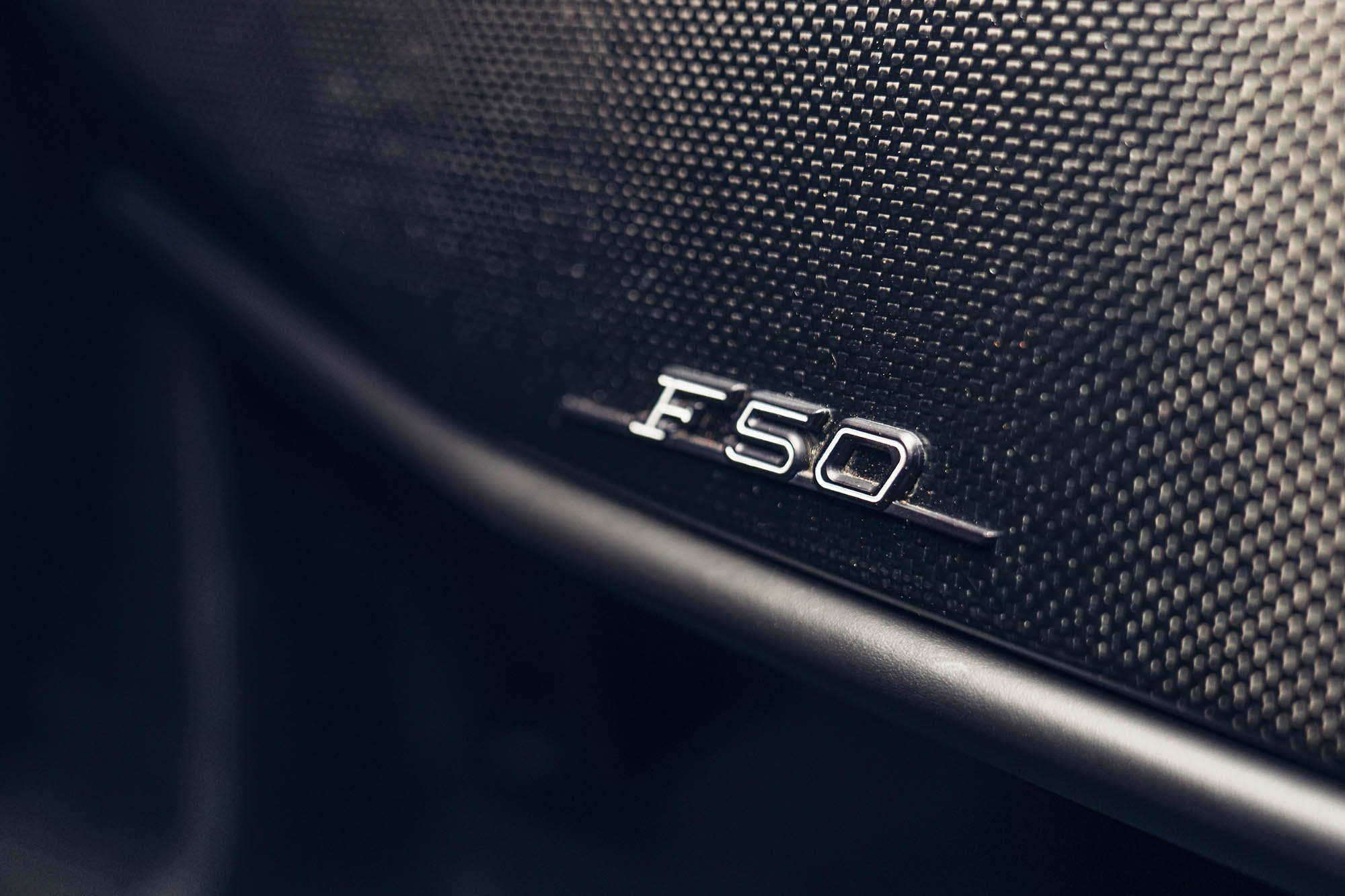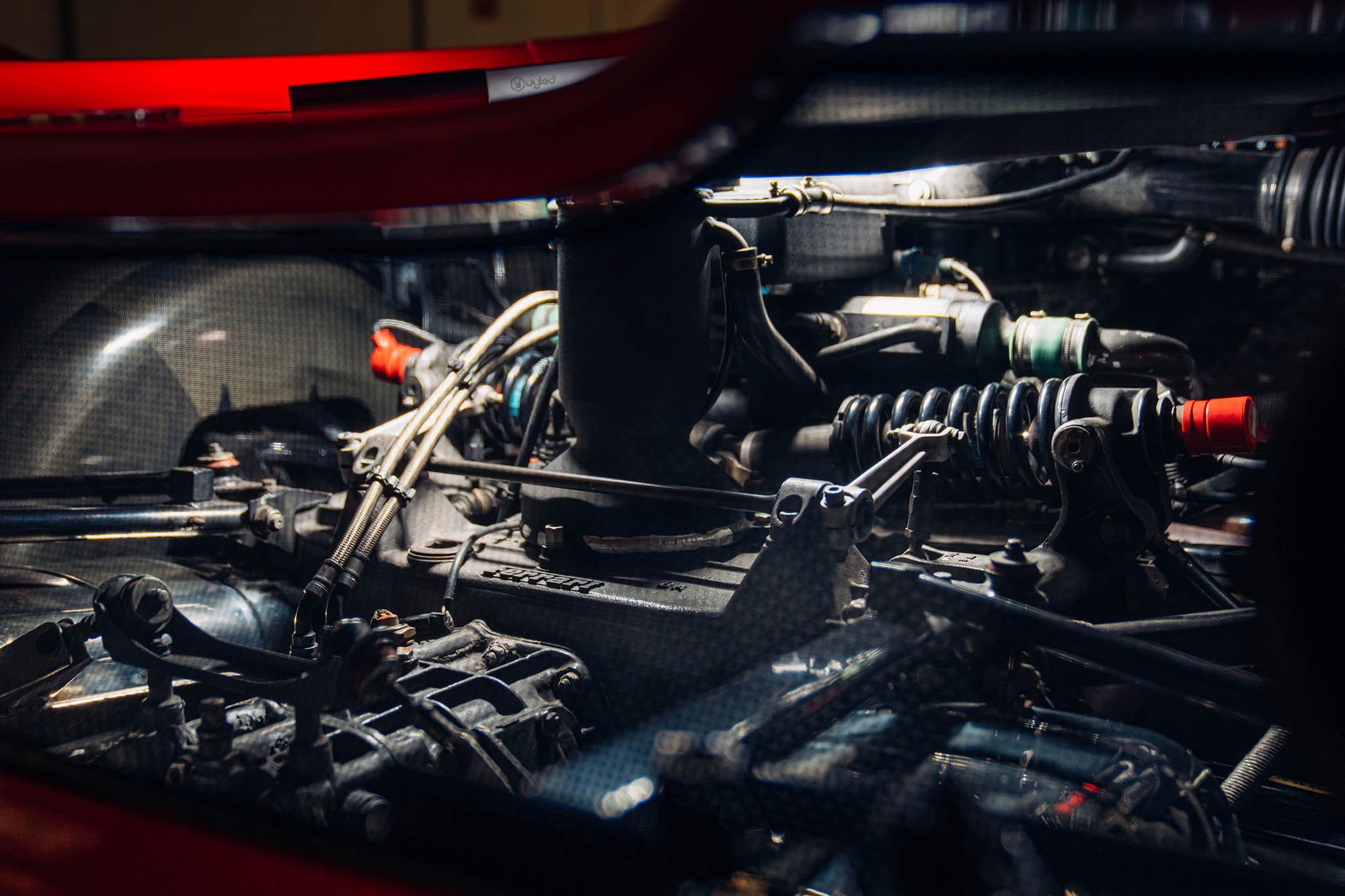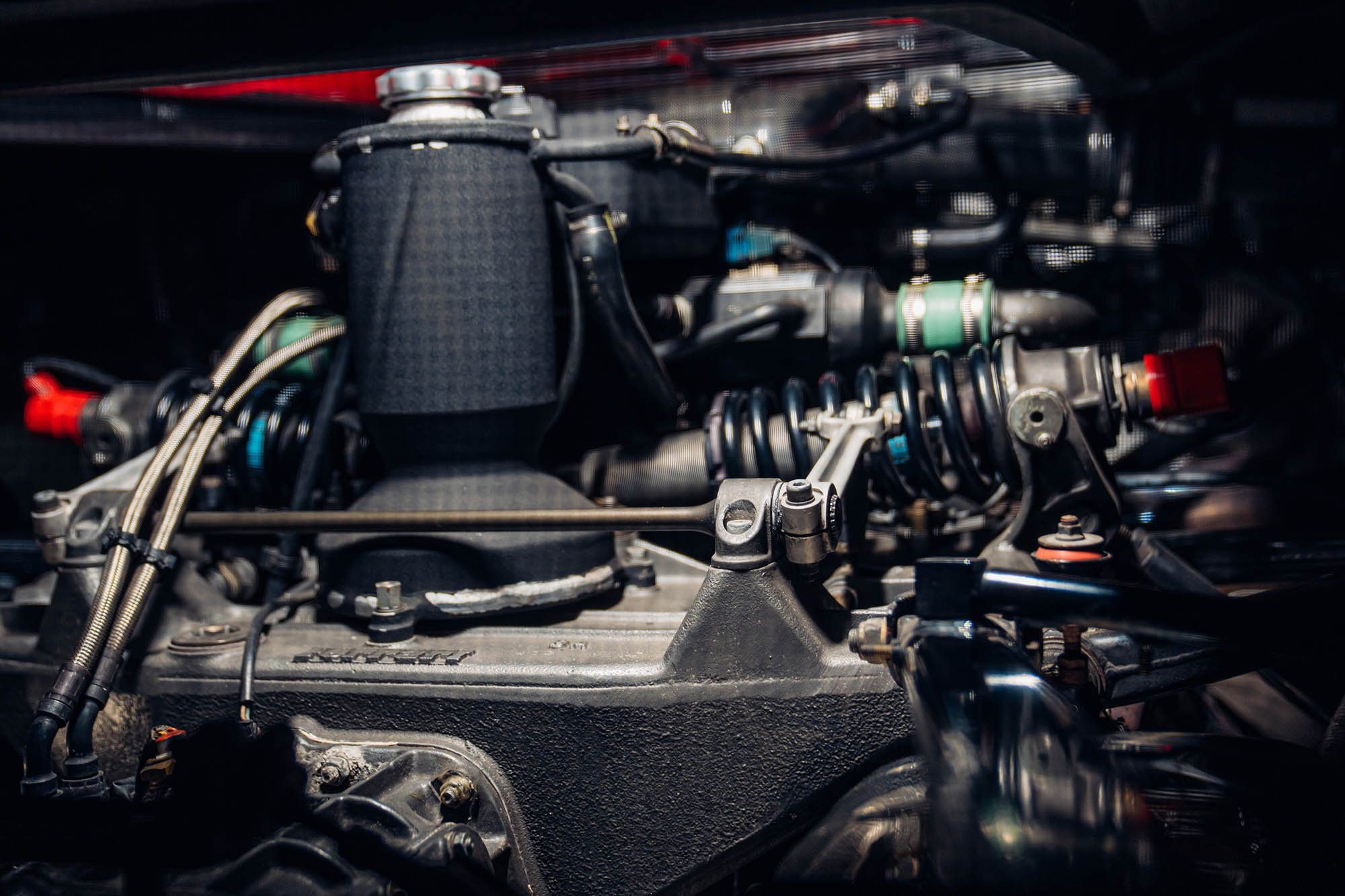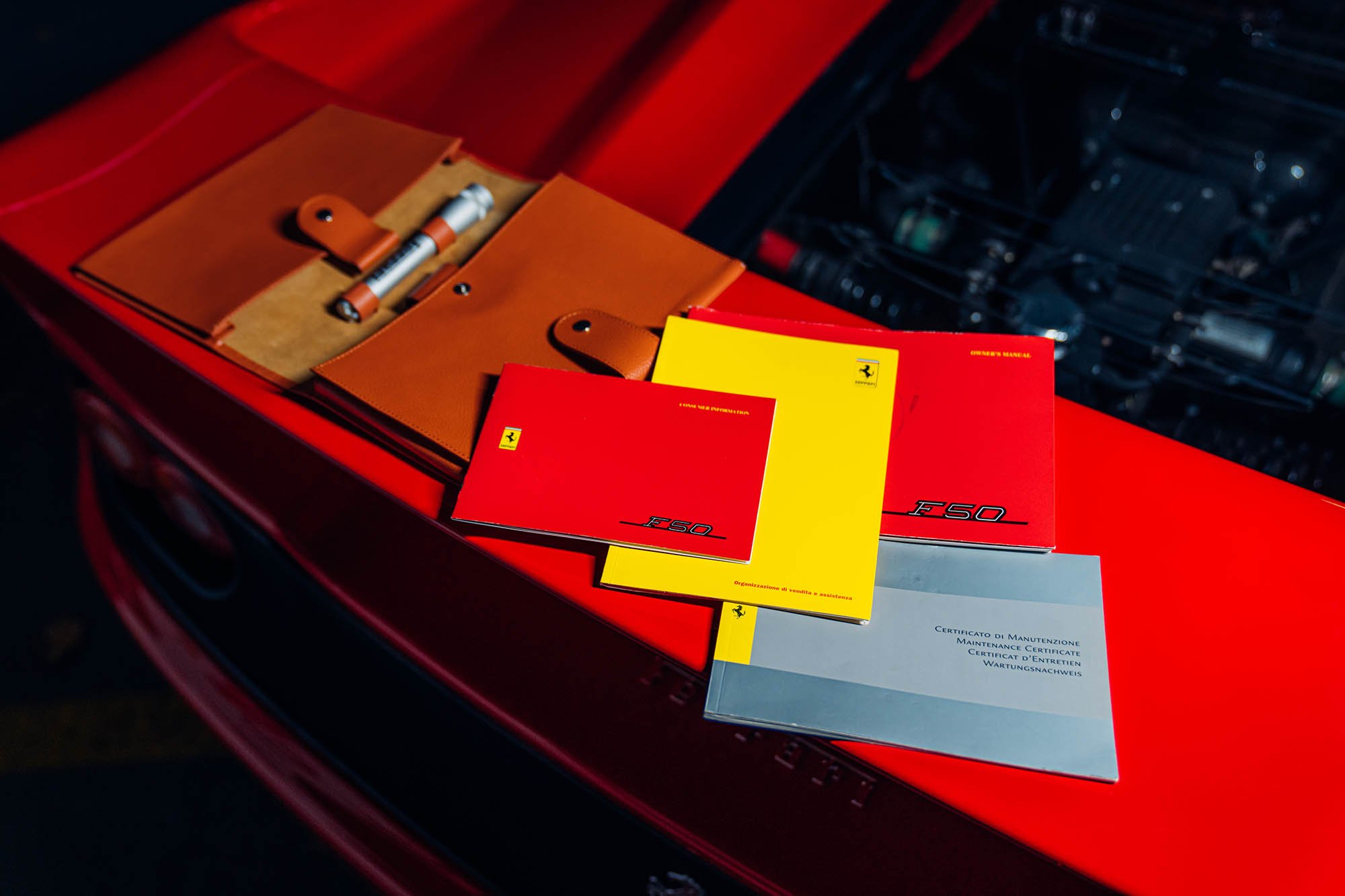Ferrari's road-going Formula 1 car
Created to celebrate Ferrari’s 50th anniversary, the F50 was powered by the new F130 B engine, a naturally aspirated 4.7 litre V12 unit that followed the lineage of the 3.5 litre engine used by Scuderia Ferrari in Formula 1 a few years prior. The car was developed by Ferrari as a “halo” model to demonstrate the company’s propensity for performance, rated to launch the F50 to 60 mph from standstill in just 3.6 seconds, and topping out with an official top speed over 200 mph.
From the outset, the F50 gave an uncompromising, purist approach to performance. Drivers were freed from the interference of power steering, power-assisted braking, and ABS; a design ethos that produced maximum feeling on the road while in turn acting as a weight-saving measure. Contrasting the deliberate crudeness, designers in Maranello made good use of technologies that were relatively advanced for the time, factoring in highly sophisticated composite materials, employing construction techniques typical of a Formula 1 car, and building the car around a carbon fibre monocoque chassis. Using all of Ferrari’s motorsport derived technology resulted in a supercar tipping the scales at just 1,230 kilograms when dry.
Ferrari made 349 numbered examples of the F50 in a two-year production run, exclusively manufactured in left-hand-drive configuration. The model gained acclaim with customer deliveries around the globe, despite the limitations imposed by the position of its steering wheel and pedals—yet a limited number of owners explored options to customise this. This example, which was completed by the Maranello factory in March 1997, is one of an extremely limited number of F50s which were converted in period by official Ferrari coachbuilder Pininfarina to right-hand drive.
Finished in the classic Ferrari colour combination of Rosso Corsa over black leather interior, this 1997 F50 is currently available from RM Sotheby’s Private Sales. Photos © Alex Penfold / RM Sotheby's.

